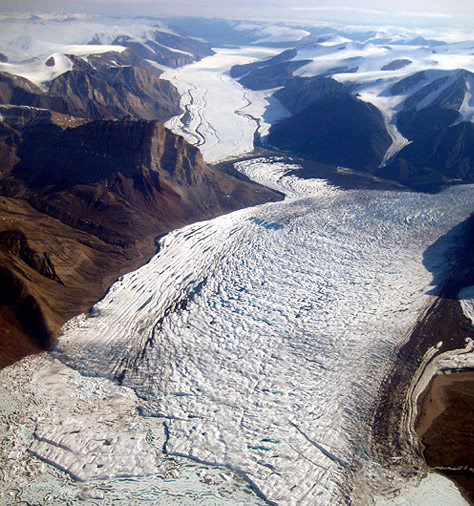Scientific Program

Contexte
Permafrost covers about 25% of Northern hemispheric land masses and represents a carbon reservoir of 1400 to 1850 Pg C [1], far greater than the atmospheric reservoir of 730 Pg C. Current estimates [2] evaluate that 160 to 290 Pg of thawed permafrost C could be released to the atmosphere as CO2 and CH4 by microbial mineralization by 2100, adding an extra 80 to 150 ppm equivalent CO2 to the atmosphere. This would represent one of the most important climate feedbacks. The awareness of this issue is growing and permafrost thawing has been described as a “time bomb” and one of the keys to the fate of the planet at the 2012 Doha climate conference.
However, predictions of the amount of carbon released suffers from large uncertainties, first because the evolution of the permafrost thermal regime is poorly understood and second because the fate of C in thawed permafrost involves many complex physical, chemical, and biological processes, some of which are only started to be identified [3-6]. These recent works suggest that many positive feedbacks have been neglected in models, so that predictions may seriously underestimate future GHG emissions. Two aspects must therefore be studied before we can quantify the permafrost-climate feedback: (1) the evolution of the permafrost thermal regime; (2) the rate of mineralization of the permafrost carbon and of the ensuing GHG release.

Uncertainties in predicting permafrost thermal regime come from a lack of studies of the interactions between snow, vegetation, climate and permafrost. Climate warming favors shrub growth on the tundra [7]. These shrubs trap snow, limit its compaction and erosion by wind and favor the development of highly insulating snow layers made of depth hoar. Gouttevin et al. [6] have shown that changes in snow thermal conductivity due to vegetation growth could dramatically raise ground temperature, by up to 10°C at 50 cm depth at the end of winter. These effects are not currently taken into account by land surface models (LSMs) so that there is an urgent need to investigate the details of snow-vegetation-permafrost-climate interactions.
Thawed permafrost becomes vulnerable to erosion and is subject to the formation of thermokarst ponds [8]. OM in thawed permafrost has a complex structure and can be mineralized and released as CO2 and CH4 within the thawed soil [9]. Alternatively, it can be exported to thermokarst ponds and subsequently to the hydrological network by erosion [10], and it can undergo photolysis, microbial degradation, or be reburied by sedimentation in rivers or the sea [3, 4, 11]. The rate of GHG emissions is spatially highly variable [12, 13] and seems to depend on many factors such as vegetation characteristics, the bioavailability of the organic matter released upon thawing [14] and the response of the microbial food web involved in GHG cycling: primary producers, methanogens and methanotrophs [15, 16]. These factors are linked to ecosystem types and to their response as climate warms and snow and vegetation characteristics change.

Given the complexity of the processes, our current ability to model the fate of carbon in thawing permafrost is very limited. Predicting just the thermal regime of permafrost is highly uncertain [17], and future GHG emissions are consequently poorly constrained [2]. Many LSMs and climate models do not even consider a frozen C reservoir and are incapable of quantifying permafrost-climate feedbacks, so that the carbon release of thawing permafrost cannot be represented. This project seeks to address the above deficiencies.
